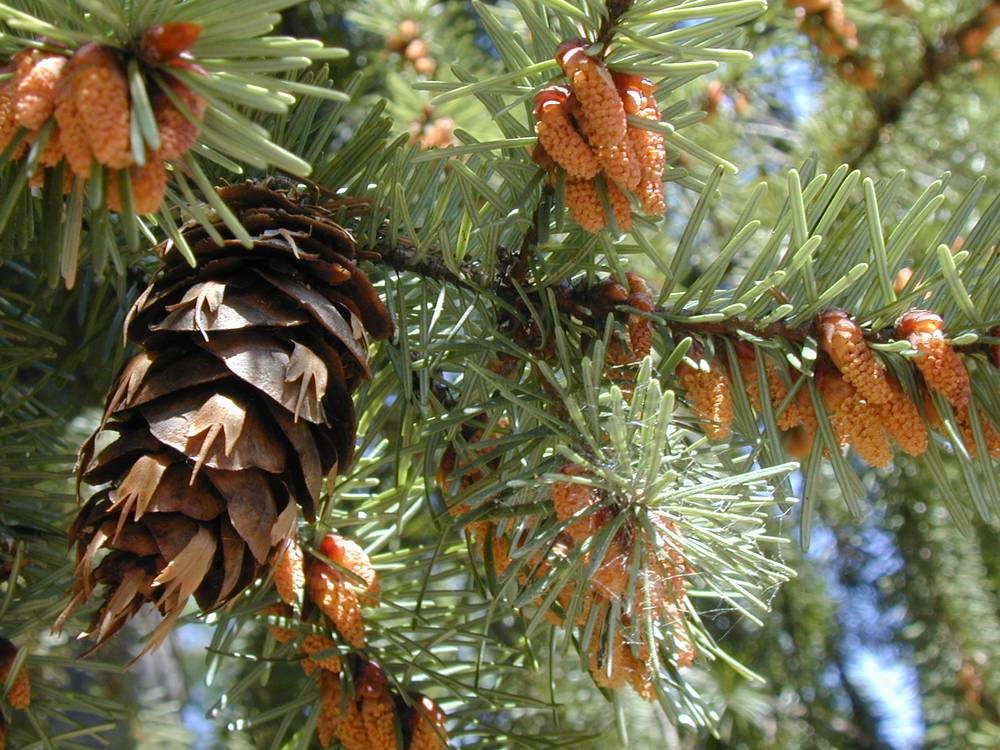Pseudotsuga menziesii
Douglas-fir
linear, 1.5–3 cm × 1–1.5 mm, yellow-green to bluish green, flattened in cross section, usually spreading;
abaxial surface ridged and somewhat glaucous;
adaxial surface rounded or grooved;
apex bluntly pointed, rarely acute.
1–2.5 cm long, yellow-red to red.
5–6 mm long; reddish brown to dark brown;
wings twice as long as seed body.
to 4 m diameter;
bark reddish brown; smooth when young, becoming thick and furrowed with age;
twigs pubescent and orange-yellow when young, becoming glabrous and reddish brown to gray with age; slender.
4–10 × 3–3.5 cm;
scales orbicular; about 2 cm long;
margins slightly irregularly toothed;
bracts inversely arrow-shaped, 2.5–3.5 cm long, conspicuously exserted.
=26.
Pseudotsuga menziesii
Western North America. 2 varieties.
Pseudotsuga menziesii is the most commercially important tree in North America. Uses range from pulp, lumber, and mulch to Christmas trees. The species is most easily distinguished from other coniferous species by the bracts of its seed cones which resemble the tail and feet of a mouse diving into a hole. This species is the state tree of Oregon.
Stephen Meyers
- Local floras:
BC,
OR,
WA
- Local Web sites:
Flora NW,
PNW Herbaria
WildflowerSearch
iNaturalist (observations)
USDA Plants Database
- LBJ Wildflower Center
- SEINet
- Plants of the World Online
- Encyclopedia of Life
- Wikipedia
- Google Image Search



